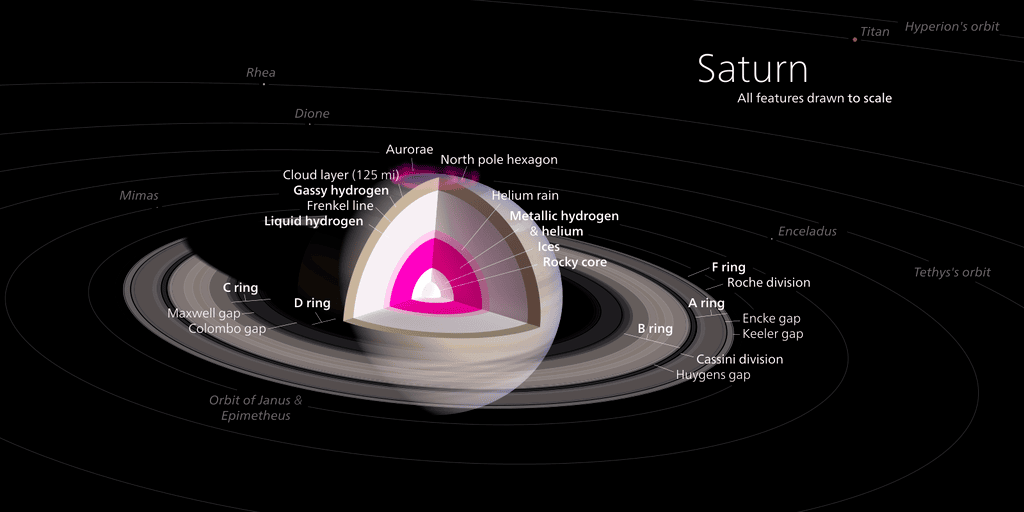
In the summer of 2004, NASA’s Cassini spacecraft began orbiting Saturn, kicking off a mission that would change how we understand the planet and its moons. This historic mission, a collaboration between NASA, the European Space Agency (ESA), and the Italian Space Agency, yielded incredible insights over 13 years. As we look back on Cassini’s legacy, we also anticipate the exciting future of Saturn’s exploration.
Cassini’s Historic Mission
Cassini-Huygens was a monumental project designed to study Saturn and its many moons. After being launched in 1997, the spacecraft traveled 4.9 billion miles to Saturn. It captured over 450,000 images and generated nearly 4,000 scientific papers.
The mission had two parts: the Cassini orbiter and the Huygens probe. These components gave us incredible new information about Saturn’s atmosphere, rings, and moons, especially Titan and Enceladus.
Unveiling Saturn’s Moons
Cassini achieved something remarkable by exploring Titan and Enceladus, two moons of Saturn. In January 2005, the Huygens probe landed on Titan, discovering its thick atmosphere rich in nitrogen and surface features resembling Earth, including rivers, lakes, and seas of liquid methane. This frozen Earth-like moon, with its complex chemistry, fascinated scientists.

Cassini’s passes by Enceladus showed surprising icy volcanoes at its south pole, suggesting an underground ocean. These plumes, containing water vapor and organic molecules, indicated hydrothermal activity, similar to Earth’s deep-sea vents, making it a groundbreaking discovery in the search for extraterrestrial life.
The Beauty of Saturn’s Rings
Cassini’s close-up investigation of Saturn’s rings provided detailed insights into their composition and dynamics. The spacecraft revealed that the rings are composed of particles ranging from tiny dust grains to house-sized objects, all engaged in a chaotic dance.
Cassini’s data helped scientists estimate the rings to be relatively young, at no more than 400 million years. This understanding has reshaped theories about the formation and evolution of Saturn’s iconic rings.